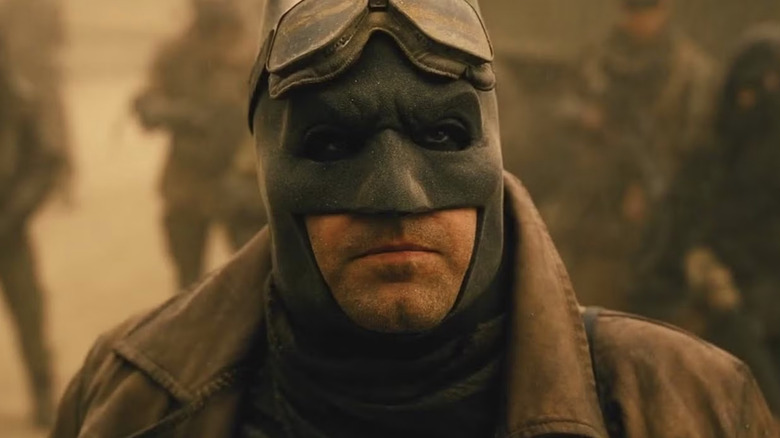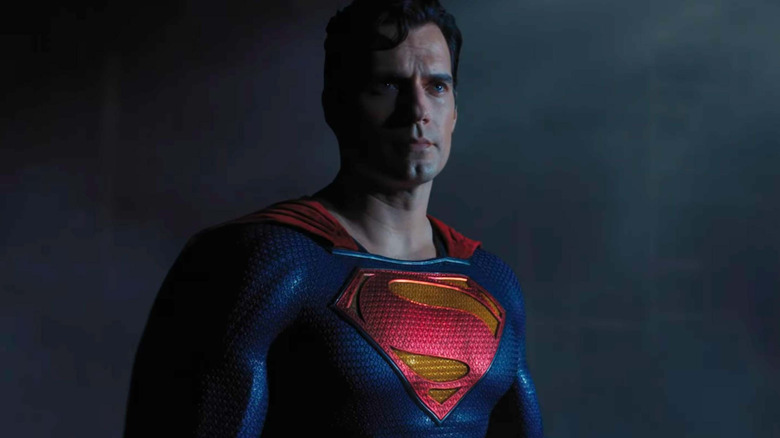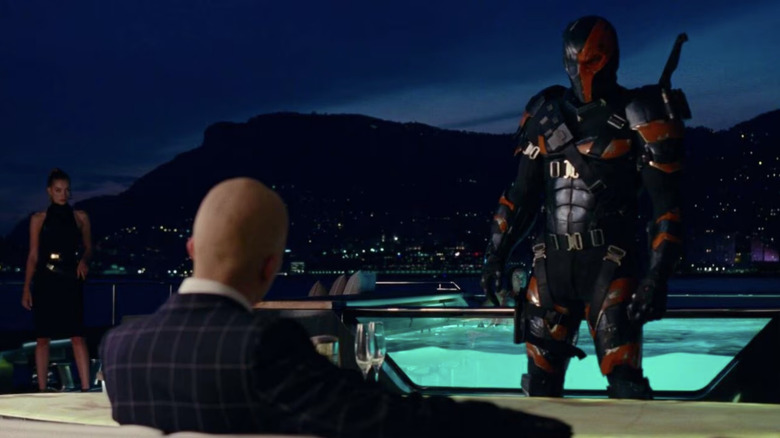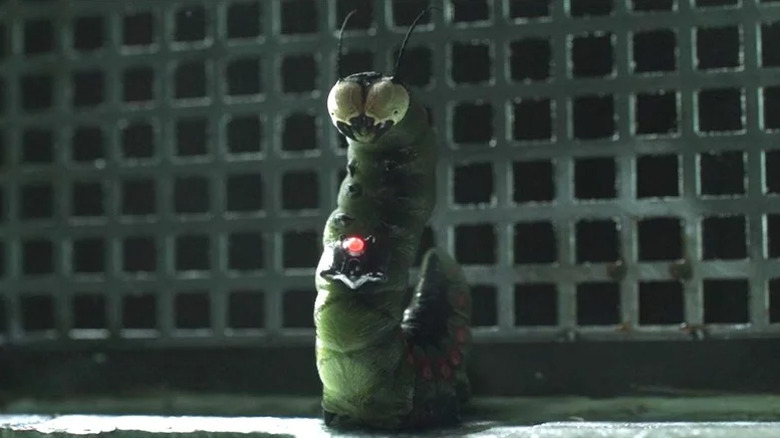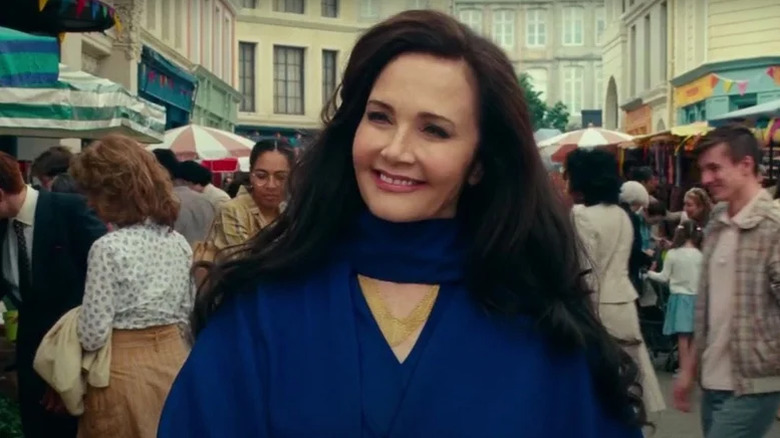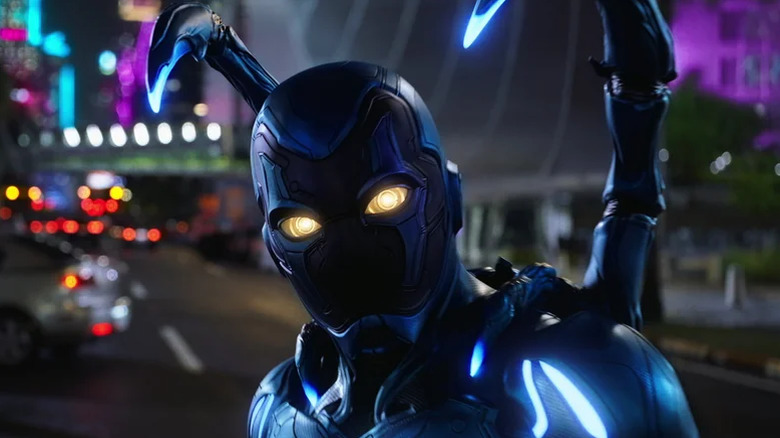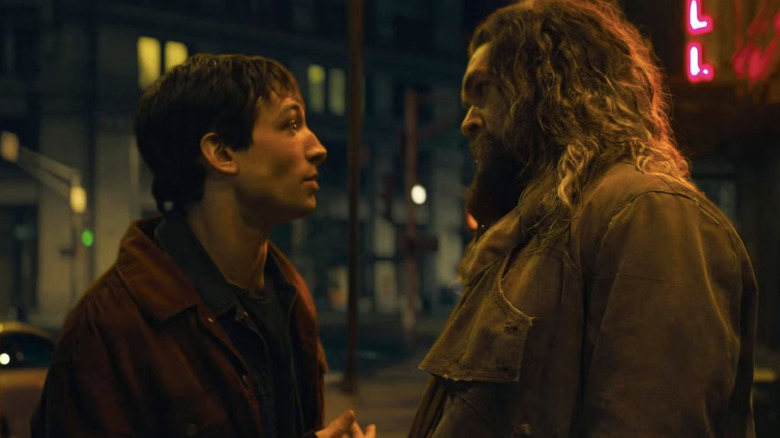Despite the clear potential for a DC-inspired cinematic universe from the start, the DC Extended Universe has been firmly dismantled by the upcoming DC Universe rebrand, brought to us by James Gunn and Peter Safran. However, back in 2013, Zack Snyder’s “Man of Steel” offered a daring take on Superman (Henry Cavill), promising a bright future for the DCEU.
But while the first installment of the franchise didn’t contain a post- or mid-credits scene, later features continued to tease more aspects of this growing universe. The problem is, nearly every major post-credits sequence would either be forgotten about or ignored as the DCEU was constantly being retooled and restructured by the studio, with major shifts in tone and new creatives who strayed from Snyder’s initial vision.
Whether you enjoyed the darker, more mature take on DC Comics’ most iconic heroes and villains or prefer the more classical approach, there are plenty of DCEU teases that will never be properly paid off. For fans of the decade-long franchise, that’s probably a tough blow. Wherever you fall on the DCEU as a whole, the franchise could have been something great if Warner Bros. had committed to the original vision the same way that Marvel did with the Marvel Cinematic Universe. But before we turn to a brand-new DC Universe, let’s take a step back and reflect on the failures of the DCEU, including mid- or post-credits sequences that never quite paid off.
Superman returns
Perhaps the most egregious failure of the DCEU was the treatment of Superman. No, this isn’t a slam on Snyder’s distinct vision for “Man of Steel” or “Batman v Superman,” but rather the studio’s failure to thrust the character firmly into the spotlight. Following 2017’s “Justice League,” Superman was only referenced briefly or appeared from the neck down (looking at you, “Shazam!”). There was never a “Man of Steel 2,” despite a pitch from “Mission: Impossible” writer-director Christopher McQuarrie.
But all of that changed after 2021’s director’s cut of “Justice League.” Following the success of the Snyder Cut, Warner Bros. brought Henry Cavill back as Superman in 2023’s “Black Adam,” teasing a battle between the Man of Steel and the Kahndaq champion played by Dwayne Johnson. But it wasn’t long before the studio immediately pulled the rug out from under us.
Although Cavill officially announced his return as Superman following his appearance in “Black Adam,” the whole thing fell apart in less than two months. Fans had been delighted at the news that the actor would don the cape again, but unbeknownst to Cavill and many others, DC Films was rebranded as DC Studios, and the entire franchise was reset for a soft reboot. Cavill was ultimately let go, and it was soon announced that James Gunn would write and direct his own “Superman” film, this time with David Corenswet in the titular role. To this day, the DCEU’s failure to bring back Cavill’s Superman sooner is still a sore spot with many.
Amanda Waller knows Bruce Wayne is Batman
The DCEU took a detour in its third installment to examine the villain side of things. With David Ayer in the director’s chair, “Suicide Squad” was an ambitious project that was panned by critics upon its release. Even Ayer sought to distance himself from the final product, noting that the studio had been far too involved in the final cut. But if there’s one thing about “Suicide Squad” that actually works, it’s the inclusion of Ben Affleck’s Batman.
In a mid-credits scene, Bruce Wayne meets with Amanda Waller (Viola Davis) for some information on the whereabouts of his soon-to-be “Super Friends.” Waller reveals that she knows all about Wayne’s late-night activities as the Dark Knight, but the problem is that nobody ever does anything with this information. While the end of “Suicide Squad” sets up a potential Justice League vs. Task Force X rivalry, the two teams never meet on screen. This is especially disappointing because Waller and Wayne clearly have interesting chemistry.
Furthermore, the DCEU could have easily gone the route of “Justice League Unlimited,” establishing a “frienemy” relationship between them. Years later, rumors of a Michael Keaton-led “Batman Beyond” movie would prove this to be a major missed opportunity, as “JLU” reveals that Waller is directly responsible for Terry McGuiness’ creation by using Wayne’s DNA. Even if “Suicide Squad” didn’t intend to set this up, a “Batman Beyond” film could have easily had its roots in this scene. Still, with Davis potentially reprising her role in the DCU, there’s always the possibility the new franchise could pick up where the DCEU left Wayne and Waller off.
Lex Luthor proposes an Injustice League
Another major missed DCEU opportunity came at the very end of 2017’s “Justice League.” Here, replacement director Joss Whedon reworked a sequence by original director Zack Snyder between Lex Luthor (Jesse Eisenberg) and Deathstroke (Joe Manganiello). Summoning Slade Wilson to his yacht, Luthor explains that the pair ought to form “a league of their own” now that the Justice League has gone public. Whether you call them the Injustice League, Injustice Gang, or the Legion of Doom, this was clearly setting up a cabal of supervillains to rival the world’s greatest superheroes.
No doubt, this would have been an exciting prospect for the growing franchise, setting up rivalries that would (theoretically) last for many years to come. Unfortunately, neither of these characters was seen or heard from again — apart from a superior version of this scene seen in Zack Snyder’s director’s cut of the film, that is. This was especially disappointing given that Manganiello’s Deathstroke was set to play a major role in Ben Affleck’s unmade version of “The Batman.”
Affleck’s unrealized “Batman” film could have been great, but following the poor reaction to “Justice League,” the project ultimately never came to be. As a result, the Deathstroke plotline was abandoned, and Luthor’s dream for a powerhouse group of supervillains died a quick and unceremonious death. While that was probably best for the world of the DCEU, we sure would have loved to see the League take on a live-action Legion of Doom down the line. Maybe this is something the DCU could do in the near future.
Sivana and Mr. Mind meet (twice)
It’s one thing to leave an open-ended tease that will set up a sequel, but it’s another thing entirely to tease the exact same idea two films in a row with no follow-through. That’s exactly what “Shazam!” and its sequel, “Shazam! Fury of the Gods,” did with their mid- and post-credits scenes, respectively. At the end of “Shazam!,” the villainous worm Mister Mind (David F. Sandberg) visits an incarcerated Doctor Sivana (Mark Strong) and offers a partnership. Then, two years later in “Fury of the Gods,” Mister Mind returns to meet with Sivana again before leaving the mad scientist-turned-sorcerer for the second time.
While the “Fury of the Gods” scene is played more for humor, both scenes teased two of Captain Marvel’s Shazam’s (Zachary Levi) biggest villains teaming up for revenge against the Wizard (Djimon Hounsou) and his champion, though the DCEU never actually delivered. While “Shazam!” produced both a sequel and a spin-off (in the form of “Black Adam”), neither made good on the first film’s promise to see the Monster Society of Evil formed.
Additionally, the poor reception to “Fury of the Gods” meant that any actual team-up between these villains — as with Lex Luthor’s Legion of Doom — would never occur in the DCEU, rendering these teases completely and utterly useless. On its own, “Shazam!” is a fun movie, but the fact that its main post-credits tease is only used as a joke in the second installment proves why the sequel ultimately failed.
Asteria is alive
Compared to the refreshing and empowering tone of the first “Wonder Woman,” it’s understandable why so many were disappointed with the sequel. Whether you enjoyed “Wonder Woman 1984” or hated its campy ’80s attitude toward the character, Diana’s (Gal Gadot) DCEU journey is one that will go down in the superhero history books. Unfortunately, the mid-credits scene tease in “WW84” will not.
Earlier in the picture, Wonder Woman recounts the story of Asteria, an Amazon warrior who donned the Golden Warrior armor to protect her people as they ventured to Themyscira. Diana notes that Asteria had perished during combat, but the film’s mid-credits scene reveals the opposite to be true. Here we see Asteria (played by original “Wonder Woman” television actress Lynda Carter) save a young infant from danger before disappearing into a crowd.
It’s a small scene, and it’s fun to see Carter back in a Wonder Woman-related project after all these years, but because the DC Extended Universe was never actually building toward anything grand (at least, not after Snyder left the franchise), Asteria’s inclusion here is nothing more than mild fan service. Had there been a third “Wonder Woman,” perhaps director Patty Jenkins would have revisited the character and even brought her in to help Diana with her next crisis. But with the advent of the new DCU, any questions we still have about the DCEU Wonder Woman (or her allies) will sadly never be addressed — including what Asteria has been up to for the past couple of thousand years.
Shazam is recruited by the Justice Society
Adding further insult to injury, “Shazam! Fury of the Gods” didn’t just include one pointless mid- or post-credits scene, but two. At the very end of the film, “Peacemaker” characters (and A.R.G.U.S. agents) Emilia Harcourt (Jennifer Holland) and John Economos (Steve Agee) track down Billy Batson, who is playing around with his magical powers. It’s here that the pair ask Billy if he’d take up Amanda Waller’s offer for him to join the Justice Society, a group first introduced in “Black Adam.”
The hero agrees, but only because he believes that the JSA is actually the Justice League and that he’ll get some additional one-on-one time with Wonder Woman as a result. Harcourt and Economos leave when Billy continues to pester them, and we’re left with the notion that Shazam and the Justice Society will meet in the future. Of course, the franchise never brings this up again, as “Fury of the Gods” was among the final four DCEU installments before the company-wide reboot. Things get even more confusing when we consider that “Peacemaker” is still considered canon to James Gunn’s new DCU — except for those Justice League cameos at the end of Season 1 — which makes us wonder if Shazam could eventually factor into the new franchise.
While the jury’s still out, the aforementioned response to “Fury of the Gods” makes this highly unlikely, and it’s far more probable that the DCU (which includes “Peacemaker” Season 2) will forget about this mid-credit tease entirely going forward.
Ted Kord is alive
For a while, there was a lot of debate as to whether 2023’s “Blue Beetle” would be considered a part of the DCEU or the newly announced DCU reboot. So which is it? Well, as with Gunn’s other DC projects (“The Suicide Squad” and “Peacemaker”), it’s a little bit of both.
While a second “Blue Beetle” movie is unlikely, an animated series continuation set in the new DCU is in development, with a projected release date of 2026. Additionally, Gunn confirmed that Xolo Maridueña will continue to play Jaime Reyes/Blue Beetle in the future, despite official DCU canon not existing prior to “Creature Commandos” and 2025’s “Superman.” Still, this means that the “Ted Kord is alive” tease at the very end of the 2023 film will never be officially addressed in the DC Extended Universe.
Although it’s a very small moment, the mid-credits reveal concerning Ted Kord’s (voiced by Bobby McGruther) survival was an exciting surprise for long-time fans. Kord is a beloved comic book character for a reason, and he’s even returned to life in recent DC Comics, much to the joy of fans everywhere. But unlike the comics, the film’s tease largely falls flat. Sadly, “Blue Beetle” was already tainted by the news of the DCU reboot, and with the DCEU’s fade-out, we may never get to see this plotline followed up as intended (“Blue Beetle” was meant to kick-start a potential trilogy, after all). At least Jaime Reyes still has a shot of being drafted into the DCU’s future.
Barry and Arthur go out
The final five installments of the DCEU proved that the franchise had essentially dried up. Henry Cavill’s Superman was dropped after “Black Adam,” Ben Affleck’s Batman return in “The Flash” was overshadowed by Michael Keaton, Wonder Woman was relegated to two lackluster cameos, and Ray Fischer’s Cyborg was written out entirely. Plus, despite headlining their own films, Flash and Aquaman consistently dropped the ball. To say that where the DCEU left the Justice League was a major disappointment would be an understatement.
After their reunion on “Peacemaker,” Barry Allen (Ezra Miller) and Arthur Curry (Jason Momoa) bar hop together at the end of “The Flash.” As Barry rants about time travel, it all falls on deaf ears, as Arthur is too drunk to stand. But while it’s a poor representation of these iconic heroes and clearly a weak attempt at humor, the scene also teases the possibility of the League exploring the greater multiverse. And it’s not the first time. Back during the Arrowverse’s “Crisis on Infinite Earths” crossover event, Miller’s Flash encountered Grant Gustin’s Barry Allen by accident when he bled into “The Flash” television series’ reality. Though Barry vanished before he could learn more, it was clear that the DCEU had multiversal potential.
Unfortunately, due to the terrible reception of the “Flash” film (and the DCU reboot), the DCEU never had the chance to explore the multiverse the way the MCU has since “Avengers: Endgame.” Despite these small teases and “The Flash” exploring that realm, the franchise was axed before it had the opportunity. But who knows? Maybe one day the DCU could venture into the multiverse and return to the DCEU, at least temporarily.
All the Knightmare stuff goes nowhere
Technically the “Knightmare” sequences from “Batman v Superman: Dawn of Justice” and “Zack Snyder’s Justice League” aren’t actually post-credits scenes, but if you consider the “Epilogue” segment of the Snyder Cut to be one glorified post-credit sequence (which we do), then this one definitely counts. Arguably the biggest missed opportunity in the entire DCEU, the post-apocalyptic “Knightmare” future could have been something big if Snyder had been allowed to continue his “Justice League” story.
While some say that Snyder’s trilogy would have killed the DCEU for good, at least the “Knightmare” timeline would have been a far more exciting way to go out than “Aquaman and the Lost Kingdom.” Snyder’s “Justice League” not only introduced Darkseid (Ray Porter) as the franchise’s biggest bad, but it also teased a team-up between Batman, Flash, Cyborg, Mera (Amber Heard), Deathstroke, and the Joker (Jared Leto), as they are hunted by a brainwashed Superman who may have been responsible for Wonder Woman’s death. “Justice League 2” would have been wild, and it might have raised the stakes like few superhero films have before.
Although we finally got to see Zack Snyder’s vision for “Justice League” years after Joss Whedon ruined his film, the damage had, tragically, already been done. The entire “Knightmare” story will never be told, nor will we ever see more of this Cyborg or Harry Lennix’s Martian Manhunter. It’s a shame, really, but here’s hoping that whatever Justice League story the new DC Universe will cook up, it will be as grand and epic as anything the DCEU could have done.

